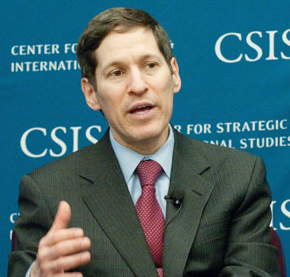 On Friday, July 11, Dr. Thomas R. Frieden, director of the Centers for Disease Control and Prevention, told a national press conference he was “disappointed,” “deeply troubled,” “frankly angry,” “astonished,” “unsettled,” “upset” and had lost sleep over safety lapses at CDC facilities that “never should have happened.”
On Friday, July 11, Dr. Thomas R. Frieden, director of the Centers for Disease Control and Prevention, told a national press conference he was “disappointed,” “deeply troubled,” “frankly angry,” “astonished,” “unsettled,” “upset” and had lost sleep over safety lapses at CDC facilities that “never should have happened.”
Do you think he was clear on this?
How far does a leader need to go to express anger and upset after safety lapses? Sometime I think there is more than a bit of over-compensating going on.
Dr. Frieden was reacting to a June incident that involved the unintentional exposure of personnel to potential viable anthrax at the CDC’s Roybal Campus and an incident earlier this year in which year a culture of non-pathogenic avian influenza was unintentionally cross-contaminated at the CDC influenza laboratory with the highly pathogenic H5N1 strain of influenza and shipped to a BSL-3 select-agent laboratory operated by the United States Department of Agriculture (USDA). There were no exposures as a result of that incident.
Naturally after safety problems arise immediate steps are taken. The CDC influenza lab is closed until further notice. There is a moratorium on the movement – transfer inside or outside CDC – of biological infectious agents, active or inactivated specimens, from certain CDC facilities.
The CDC’s reaction replicates what many companies do after they are shocked and astonished by safety breaches. CDC has a pending review by an advisory committee. A “high-level” working group, reporting to the top man, Dr. Frieden, will among other things “accelerate improvements in laboratory safety.” The process of establishing an external advisory group for lab safety has begun. CDC will establish a CDC-wide single point of accountability for lab safety.
Isn’t accountability a fundamental of workplace safety? Why the wait?
“We need to look at our culture of safety at all our laboratories,” said Dr. Frieden. Isn’t auditing a mainstay of safety and health management systems? CDC hasn’t examined their safety cultures previously?
Dr. Frieden said it was “deeply troubling” that there was “an unacceptable delay in providing” information about the incidents. “It's very important to have a culture of safety that says if you've got a problem, talk about it,” he said. “So we will do a full investigation to understand the causes of it.”
Ah, lessons learned the hard way. Does anyone in leadership positions read any safety literature at all? Scores and scores of articles are out there on what makes for successful safety cultures.
Another reaction: Dr. Michael Bell has been appointed to be director of laboratory safety and serve as the single point of accountability to improve all laboratory safety protocols and practices and procedures.
Great. Who had this responsibility before the problems surfaced? And Dr. Bell should not be the sole person, the single point, responsible for improvements. Yeah, give it to the safety department. Every employee at any organization should be personally accountable for safety.
“These are wake-up calls,” Dr. Frieden said in response to the news of safety problems that apparently took some time in reaching him at the top of the organization. Bad news does tend to travel slowly up the chain of command. Especially non-profit making issues like safety and health. You can bet that sales declines, profit problems and stock declines reach the executive level much quicker.
What is it about safety that too often requires “wake up” calls in order to fix problems? The inference is too few people are paying attention on a regular basis. Why? Because highly publicized embarrassments such as the CDC has just experienced are rare. That infrequency leads to a lack of mindfulness, and to complacency. And then, predictably, when the stuff hits the fan it leads to one chagrined and “astonished” senior leader making righteous assertions and promises and pledges about “never again.”
This pattern of senior leadership behavior regarding safety issues, not just on the part of CDC but throughout corporate America, is dismal when you think of the workers’ lives endangered, injured or killed.
When it comes to safety, history indeed repeats itself – again and again. Who is going to step up and change this sorry history – and how? I don’t believe that in 2014 there are more critical and pressing questions that confront the safety and health profession, safety and health regulators, safety and health educators, and safety and health activists in labor unions and public health.


Recent Comments
In addition to the personal hardship and loss...
No one will know the answer to this...
Bad drivers don't have to ruin your day...
Healthcare workers face a number of serious safety...
In my experience, truck drivers are treated with...